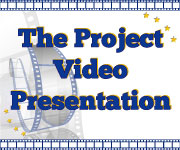basic information
THE INITIATIVE PROMOTER’S PERSPECTIVE
"Today's learners are Tomorrow's leaders" it is the point start for our project. Everything started with some information about our youngsters: …75%don`t speak correctly …67%don`t know how to work on a computer …81%are afraid of speaking English( or other foreign language) …89%don`t know how to act independent. The structure that promote and sustain GTP on international level:
* IICD, International Institute for Communication and Development, the Netherlands owns and manages the project
* TRT, The Round Table Foundation in The Netherlands globally coordinates the project
* Amoba Foundation, GTP Country Coordinator support GTP schools and teachers in ROMANIA with organizational support
* GTP is a partner with iEARN, the International Education and Resource Network
What is GTP?
A global project, with 12 years of experience that take place in 40 countries, 400 schools and involve 16.000 students. It provides thematic Learning Circles in 6 languages: English, French, Arabic, Spanish, Dutch, and German.
* To improve the quality of secondary school education by introducing schools to the exciting new applications of information and communication technologies (ICT);
* To promote intercultural awareness and sensitivity by opening up regular, lively classroom debates in a safe and structured environment.
GTP take place through the well-known and proven concept of Learning Circles. A Learning Circle is a collaborative didactical process that groups an average of 12 classes in thematic learning. Classes involved in Learning Circles sponsor a question and contribute to the project by doing research and answering questions of others. GTP Learning Circles run twice a year: September – November February – April GTP Learning Circles are grouped thematically by age level: 9 – 12; 12 – 15; 15 – 18
There are two main Learning Circle categories:
- Communication Based
- Research Based: open for classes having successful completed at least one communication based Learning Circle.
Learning Circles use the following two technologies:
D-groups: http: //dgroups.org PBWiki: each
Learning Circle has its dedicated wiki.
Learning circle registration process: Teachers/Classes select a theme
They send their placement form to the GTP Country Coordinators Country
Coordinators communicate with GTP Learning Circle facilitators
Teachers/Classes receive a confirmation email from GTP Learning Circle facilitators
Characteristics of GTP learning circles:
* Fixed timeline for a period of 10 weeks
* 6 Phases
* Each Learning Circle groups an average of 12 classes
* Requires a commitment from classes to follow the timeline and complete all the Learning Circle activities
* Participation is graded
* Participants receive a certificate of completion.
Some facts about GTP in Romania:
GTP Romanian school network, 15 schools
Over 6.000 participants in 2000- 2010 period/ 1.500 participants/year
20 learning circles processed Romania / best GTP country award 2000/2010
Average 50 groups/learning circle
Performance average 85%
Results
Over 20 Teachers & students training educational programs (IT, ECDL, e/learning, multilingualism), seminars, conferences
GTP Camps (2004 RO/HU, 2005 RO/HU, 2006 RO/HU, 2007 LV, 2008 Oitoz, 2010 Arcus)
8 open days
9 YooToo! Clubs
What are our main achievements?
MODERN EDUCATION
Critical thinking
Attitude
Creativity
Teamwork
Tolerance
Interculturality
Computer skills
The project has a big potential to be transferred on large scale in educational system. It is very effective and motivating for students.
I consider this project very important first for my school and students and second for the other participant schools/ countries. In our school we grow from 2 participating teams in 2005 to 25 participating teams in 2012. For 7 years it was a constant project in our school and students are happy to take part in it. This is why I wanted/ we wanted to apply for European Language Label. First like recognition of our students work. But also as a way to give added value to the project in order to promote it more in other schools/ countries.
After we were awarded we gave some press releases, so all our local community knows about the project and its recognition. Also we continue in disseminate the results of project year by year organizing workshops and contest among our students and students from other GTP schools. GTP Open Day was also an initiative that became a constant in our school life. And also we presented the project abroad when we took part in seminars regarding formal or non-formal education.
Obvious our project become more visible in local community. More students and teachers wanted to be involved in this activity. Our school image has also only good points from this. And our educational offer became more attractive for future students.
Start from the real needs of our students and take small steps. In time, like this you can build a strong project.
Comments on this Case Studies
